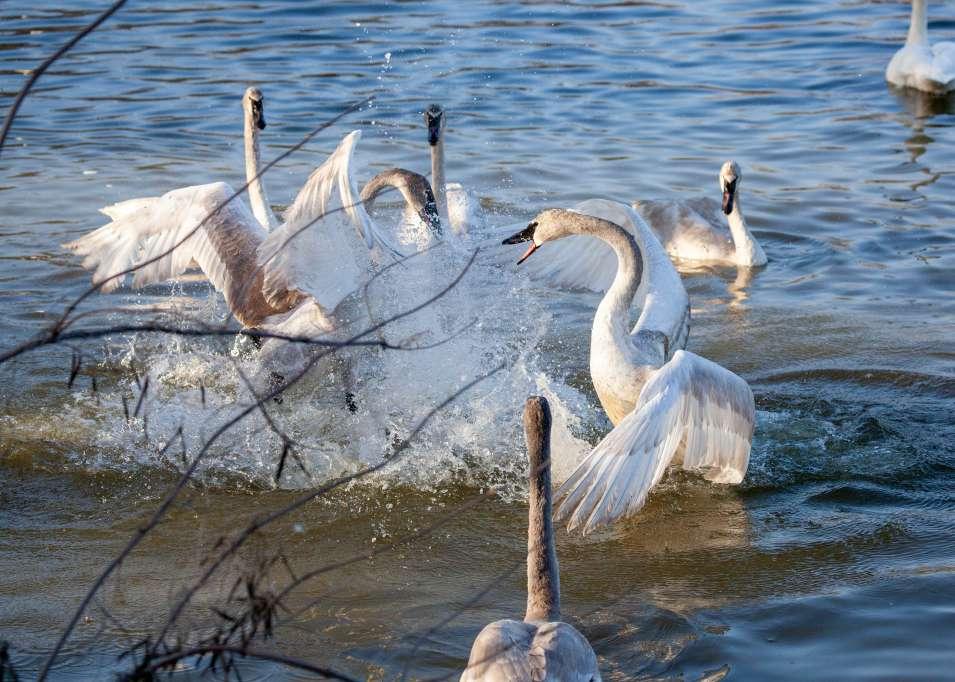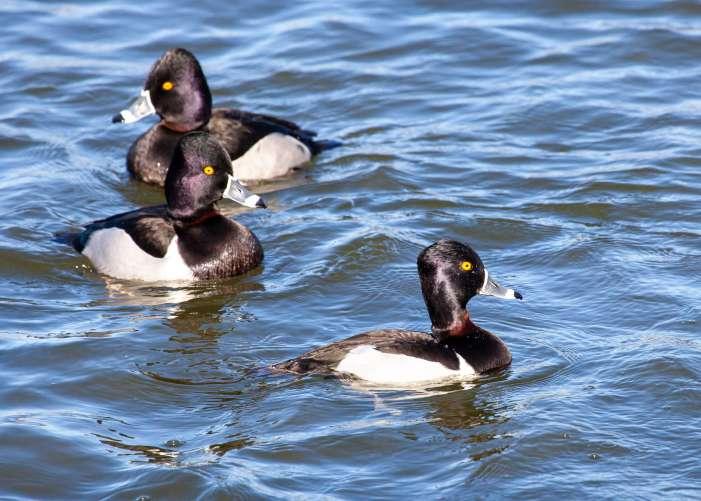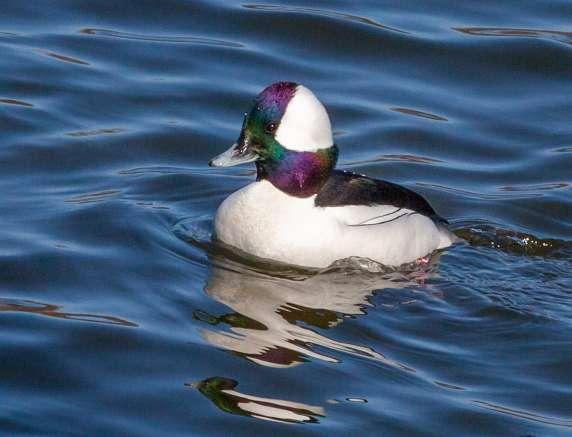
3 minute read
Trumpeter Swans
Be on the look out for flocks of swans migrating to Arkansas in November. Trumpeter Swans are annual visitors to the Heber Springs area.They can be seen on Magness Lake beginning in middle to late November until middle to late February. A safe timeframe is usually between Thanksgiving and Valentine’s Day.
The swans have been visiting this area in winter since the early 1990’s. There has been some speculation as to what first brought these graceful creatures here, since they are not normally found in this part of the country. Its been stated that severe weather may have initially brought them down here, and they’ve been returning and increasing in numbers every year. Arkansas is the farthest south these birds have been found, normally staying in the northern states during winter, and Canada during the summer months.
The best time to see them is usually after noon.
Here is a three pictures series of one coming in for a landing.

Reports on size vary, but the Trumpeter Swan is quite large.

Most sources have adults somewhere between 4feet-6feet in length with a wingspan between 6-10ft. Here one makes an artful pose in front of a group that includes a couple darker colored juveniles.

There are also plenty of other stunning birds to catch your attention while visiting the swans. Here are a few of my favorites.
The striking mallard duck, left, is usually present, and the male’s green head really shines next to the blue waters.

Ring-necked ducks are another unique species known to be on Magness Lake. Pictured below are some males with their striking golden eyes.

Male Canvasback ducks have bright red eyes as shown in this image below.

According to arkansas.com, a viewing area on Magness Lake is located off of Hays Road, east of Heber Springs. Follow Highway 110 about four miles east of its intersection with AR5/AR25. Hays Road will be on the left.
Hope you can experience these amazing birds while they are here!
No doubt one of the cutest is the Bufflehead duck, below. In the right lighting it’s varied iridescent feathers really sparkle.





